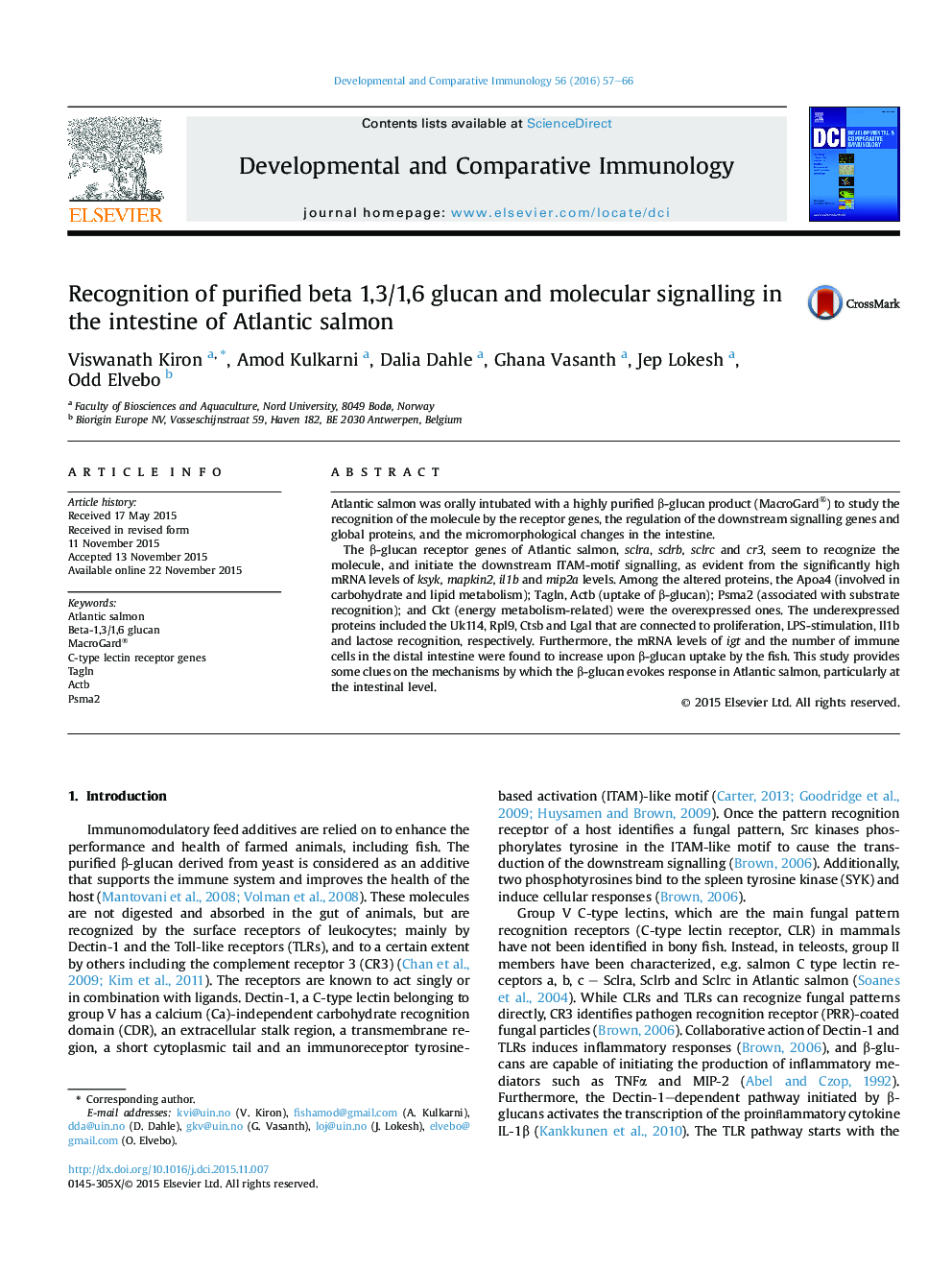| Article ID | Journal | Published Year | Pages | File Type |
|---|---|---|---|---|
| 2428873 | Developmental & Comparative Immunology | 2016 | 10 Pages |
•Recognition and responses of purified β-glucan product at the intestinal level.•Upregulation of genes of C-type lectin receptors.•Overexpression of proteins linked to uptake and substrate recognition.•Presence of more immune cells.
Atlantic salmon was orally intubated with a highly purified β-glucan product (MacroGard®) to study the recognition of the molecule by the receptor genes, the regulation of the downstream signalling genes and global proteins, and the micromorphological changes in the intestine.The β-glucan receptor genes of Atlantic salmon, sclra, sclrb, sclrc and cr3, seem to recognize the molecule, and initiate the downstream ITAM-motif signalling, as evident from the significantly high mRNA levels of ksyk, mapkin2, il1b and mip2a levels. Among the altered proteins, the Apoa4 (involved in carbohydrate and lipid metabolism); Tagln, Actb (uptake of β-glucan); Psma2 (associated with substrate recognition); and Ckt (energy metabolism-related) were the overexpressed ones. The underexpressed proteins included the Uk114, Rpl9, Ctsb and Lgal that are connected to proliferation, LPS-stimulation, Il1b and lactose recognition, respectively. Furthermore, the mRNA levels of igt and the number of immune cells in the distal intestine were found to increase upon β-glucan uptake by the fish. This study provides some clues on the mechanisms by which the β-glucan evokes response in Atlantic salmon, particularly at the intestinal level.
